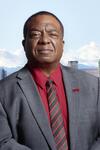In The News: Department of Physics and Astronomy
Astrophysicists have used computer simulations to show that in deep in space, tsunami-like structures may form on much bigger scales, from gas escaping the gravitational pull of a supermassive black hole.

UNLV announced Thursday it has hired Edmund “Ed” Synakowski as the new vice president of research.
More than half a century after Neil Armstrong took mankind’s giant leap on the moon, another space race is heating up. This time, the promising new frontier for Earthlings is Mars, the planet next door.
The space race to Mars is heating up, but the reality of getting earthlings to the red planet is much more challenging than some of the overly-zealous space folk make it seem. We’re looking at you, Elon Musk.
Elon Musk isn't going to stop tweeting about how humans can migrate from Earth to Mars. For a long time, Elon Musk has spoken about his intentions to send humans to Mars, and it appears that his plans aren't going anywhere anytime soon.

More than half a century after Neil Armstrong took mankind’s giant leap on the moon, another space race is heating up. This time, the promising new frontier for Earthlings is Mars, the planet next door.

The first total lunar eclipse in more than two years coincides with a supermoon this week for a cosmic spectacle.

The first total lunar eclipse in more than two years coincides with a supermoon this week for quite a cosmic show.

The U.S. Department of Homeland Security (DHS) Science and Technology Directorate (S&T) announced today the selection of 18 teams from different Minority Serving Institutions (MSIs) across the United States to participate in the 2021 Summer Research Team (SRT) program.

After a strange string of lights sent Las Vegas searching for answers, 8 News Now spoke with a local expert to explain the strange orbs that streaked across the sky Wednesday and Thursday night.
Molecules containing noble gases shouldn’t exist. By definition, these chemical elements — helium, neon, argon, krypton, xenon and radon — are the party poopers of the periodic table, huddling in the rightmost column and refusing to make molecules. Indeed, no one has ever seen any naturally occurring noble gas molecules on Earth. Earlier this decade, though, astronomers accidentally discovered one of these aloof elements in molecules in space.
A team of researchers from the University of Rochester, the State University of New York at Buffalo and the University of Nevada Las Vegas has reduced the amount of pressure required to force a material to become superconductive at room temperature, improving on their own previous results. In their paper published in the journal Physical Review Letters, the group outlines their technique and plans for the future.



